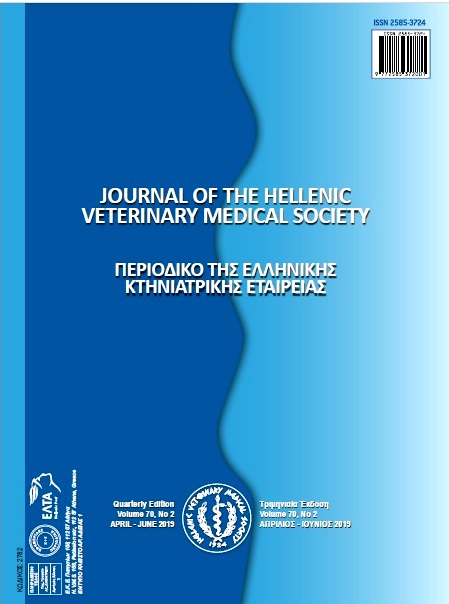Giardia sp. and Cryptosporidium sp. in Iberian Wolf

Abstract
A subsample consisting of fifty fecal samples from wild Iberian Wolf (Canis lupus signatus), from the northwest of Spain were collected in the field. The samples were analyzed for cysts of Giardia sp. and oocysts of Cryptosporidium sp. using a direct immunofluorescence antibody test (IFA). Giardia sp. and Cryptosporidium sp. were found in 20.0 % of the samples examined. Simple infections were more frequent (90.0 %) with seven (14.0 %) positive for Giardia sp. and two (4.0 %) positive for Cryptosporidium sp. To the authors’ knowledge, this is the first report of occurrence of Cryptosporidium sp. in Iberian Wolf.
Article Details
- How to Cite
-
PEREIRA, A., MATEUS, T. L., LLANEZ, L., & DUARTE, S. D. (2019). Giardia sp. and Cryptosporidium sp. in Iberian Wolf. Journal of the Hellenic Veterinary Medical Society, 70(2), 1579–1582. https://doi.org/10.12681/jhvms.20864
- Issue
- Vol. 70 No. 2 (2019)
- Section
- Case Report

This work is licensed under a Creative Commons Attribution-NonCommercial 4.0 International License.
Authors who publish with this journal agree to the following terms:
· Authors retain copyright and grant the journal right of first publication with the work simultaneously licensed under a Creative Commons Attribution Non-Commercial License that allows others to share the work with an acknowledgement of the work's authorship and initial publication in this journal.
· Authors are able to enter into separate, additional contractual arrangements for the non-exclusive distribution of the journal's published version of the work (e.g. post it to an institutional repository or publish it in a book), with an acknowledgement of its initial publication in this journal.
· Authors are permitted and encouraged to post their work online (preferably in institutional repositories or on their website) prior to and during the submission process, as it can lead to productive exchanges, as well as earlier and greater citation of published work.


